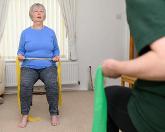see all jobs
How can we tackle problematic inactivity levels in the UK?
Talk of addressing the problem of inactivity levels in the UK has grown in prominence in recent years, with 25 per cent of Britain’s population now being classed as inactive.
Research shows that this worrying trend is on the rise too.
Projections estimate that inactivity levels are likely to increase by a further 15 per cent come the year 2030, while WHO cites inactivity as the fourth leading cause of global mortality.
The problem isn’t being ignored, however, with debate currently raging surrounding the methods, procedures and actions required to bring these levels down by increasing activity and participation.
The recent Turning the Tide report published by ukactive has called for a one per cent increase in levels of activity each year for five years - but is this achievable, and if so, how could it be done?
“Arrangements of a partnership with Public Health England are being finalised,” says Dave Stalker, CEO of ukactive.
"This will take a localised approach putting in place a regular, free regional event programme, pulling together interested parties on a regular basis to share their expertise, experience and plans through established regional networks."
Another idea would be to encourage gyms to take a larger interest in encouraging a shift towards educating about comfortable with exercise.
“Gyms have a vital role to play in promoting the industrial shift that’s needed to get people moving and make children physically literate,” adds Stalker.
Yet one major issue surrounds engaging those in lower socioeconomic groups – a section of society where inactivity is often at its highest due to price barriers that often prevent people from taking part.
“The sector will have to collaborate with organisations that already have direct access to inactive people – for example, youth groups, charities for older people and housing associations,” says Dr Paul Bedford, director of Retention Guru.
The industry and its employees may also need to do more to help establish emotional connections to provide support for inactive members of society.
“We have to get better at the emotional connections, offering real and effective support – both in the clubs and at home – and continuing to harness expertise in understanding behavioural change,” admits Georgina Ford, director of CK Academy.
“We must attract educated, passionate, enthusiastic empathetic staff who enjoy supporting inactive people to develop lifestyle changes that are practical, lasting and have impact.”
More views on tackling inactivity levels in the UK are available in the May edition of Health Club Management magazine
- News by sector (all)
- All news
- Fitness
- Personal trainer
- Sport
- Spa
- Swimming
- Hospitality
- Entertainment & Gaming
- Commercial Leisure
- Property
- Architecture
- Design
- Tourism
- Travel
- Attractions
- Theme & Water Parks
- Arts & Culture
- Heritage & Museums
- Parks & Countryside
- Sales & Marketing
- Public Sector
- Training
- People
- Executive
- Apprenticeships
- Suppliers





























